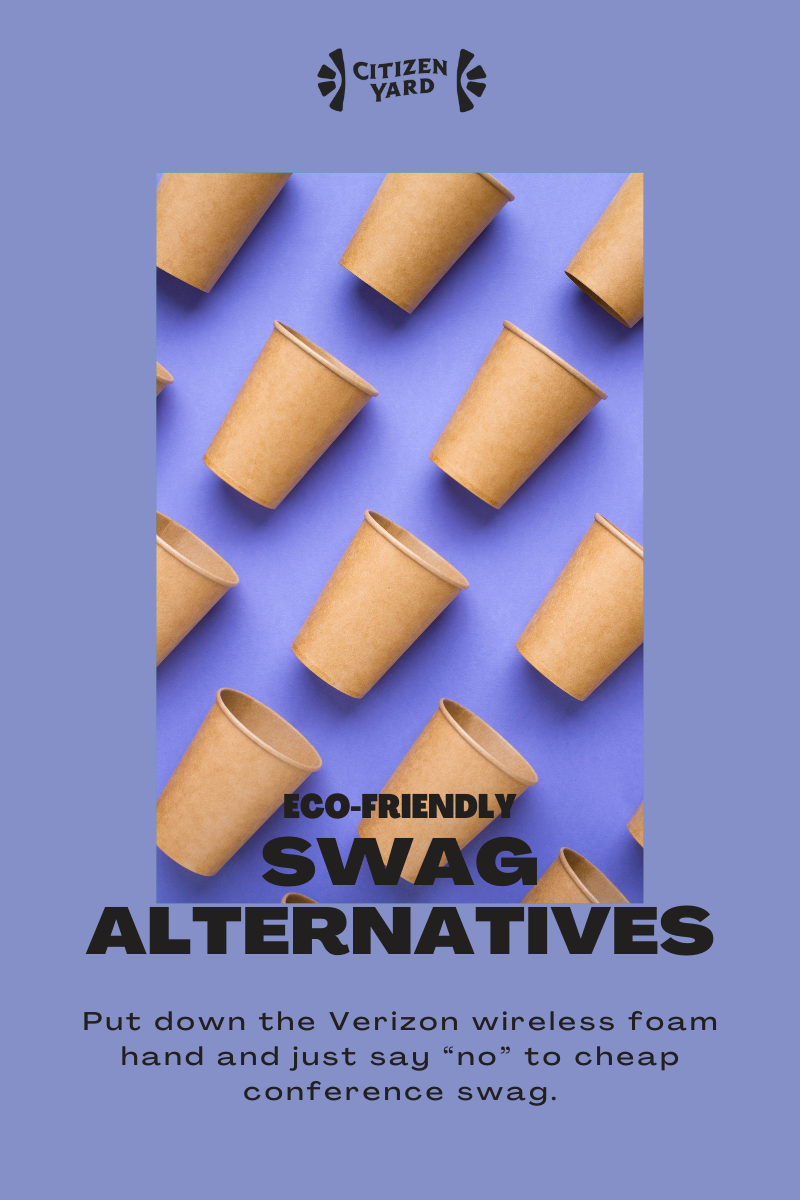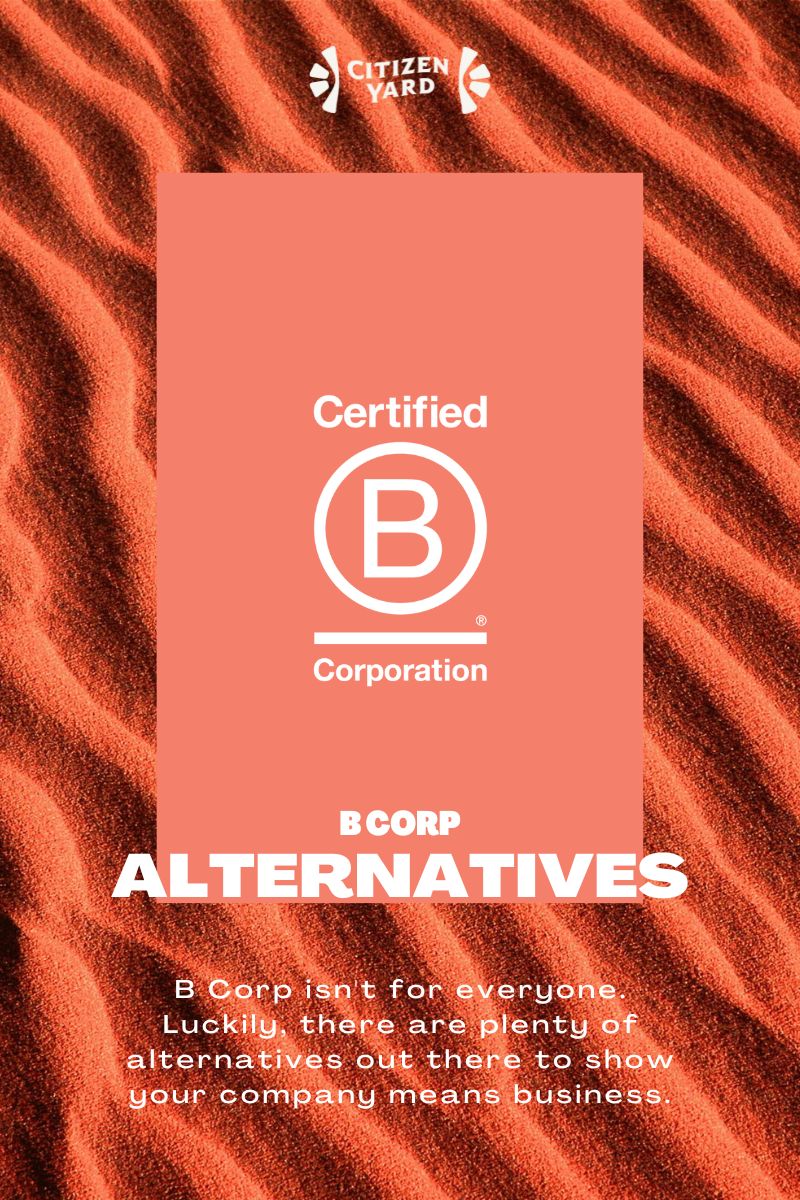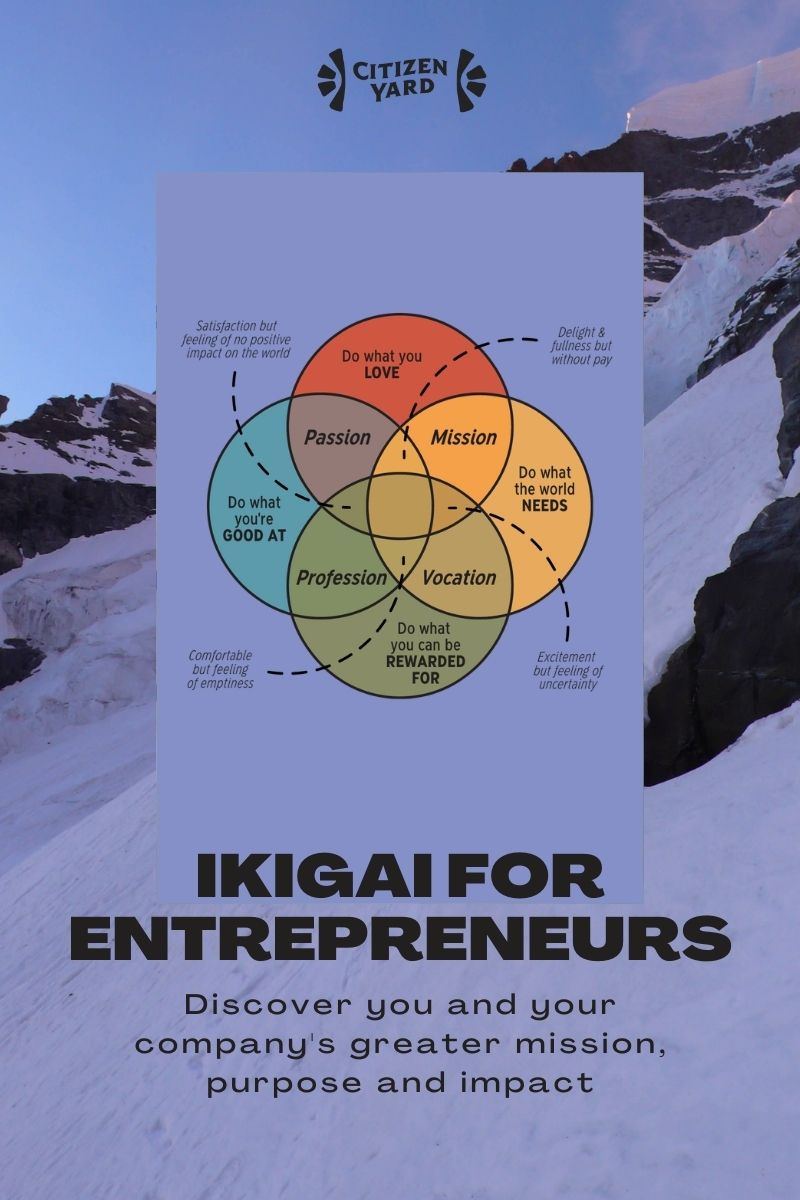
Eco-Friendly Swag Alternatives that Actually Connect
This past weekend I was cleaning up around the house and found a bag of marketing promo swag from a corporate bike race I rode in the weekend before. While the bag was nice, It was full of little tchotchke items, some passable, most bad. I plucked out the few things I would actually use — a small sunscreen, granola bar, a first aid kit — and wondered what to do with the rest. What is anyone going to do with a keychain flashlight or a stress ball shaped like a port-a-let?
Creative, but no thank you.

What’s the point of swag?
While I’m less than enthusiastic about the idea of tossing more plastic into the world, I do understand the validity of promotional materials. Promo swag serves as a form of advertising that reminds people you exist long after a conference has ended. More than once I picked up a logo’d pen a week post-conference and remembered I needed to reconnect with them. And someone toting your reusable bag around the grocery store easily expands your reach to new markets (no pun intended).But if your merch is immediately thrown out, what’s the point?
You can argue there really is none and the couple hundred dollars set aside for promotion has been effectively wasted while simultaneously contributing to global environmental and humanitarian issues. You’re smarter than that. A growing trend in society — especially among younger millennial professionals — is an inclination toward experiences over things. You’ll see this notion reflected in many of these suggestions. Why experiences? Because experiences provide a connection to your brand that plastic, glorified happy meal items simply can’t. Let’s get into a couple alternative promo ideas that will connect more with your audience than a fidget spinner.Massage
After a day walking around a trade show floor all I want is a place to relax. If I’m getting massaged at the same time, even better. Hiring a masseuse or reflexologist to work your both will give you a waiting list of sign ups. I’ve seen it. Meaning you have more than enough time to introduce your business while they wait. According to Angie’s list, rates start as low as $50 an hour making this a very affordable option. Don’t have the cash to hire someone for an entire day? Consider only bringing them in for two hours in the afternoon when trade shows hit their peak.Workshops & Demos
This one is great for small businesses as it costs time, not money. Try appealing to the masses and hosting either a product demo or series of workshops. For example, chefs and restaurants can host cooking classes or cook popular dishes live. Yoga studios can do a series of workshops while physical trainers can host seminars on various topics. This strategy shows off your expertise while giving a cold audience the chance to interact on a deeper level with your brand and offerings. Post a sign with times and have your own mini conference within a conference.Photography
This idea is not limited to photographers. Photo booths and shooting headshots are a great way to provide something fun and valuable to your audience. I can personally attest to the power of this one. In a prior position, we actually developed our own photobooth software to use as promotion material and it worked wonders. Not only did we collect information for marketing, but had a fun, interactive connection with people during the process. Additionally, it showed off our team’s development capabilities while users would then post their photos to social media giving us free promotion. It really was a win-win-win situation.High-quality, high-value items
If you do choose to go the route of tactile promo materials make sure it’s something people will truly use. Think high quality, low quantity. Or, give environmentally-friendly promo materials a go. Even though recyclable, reusable and “eco-friendly” swag alternatives do exist, they’re still a far cry from sustainable for the most part. They’re typically produced on the cheap by underpaid workers in sweat factories and rarely are they reused or recycled by users properly, thus making their way to landfills anyway. Don’t mistake the marketing term “eco-friendly” for meaning a product is actually sustainable. Often times, it’s used by brands as a buzzword slapped on products to make you feel good. Rather, look for items listed as ‘cruelty-free’ or ‘fair trade’ which undergo a much higher level of governance before being able to wear the title.Follow up is key
How many times have you exhibited at a trade show and failed to follow up with people who stopped by your tent? It’s a bit difficult to follow up with someone if all you did was hand them a flyer and a branded frisbee. It’s indicative that you get the information of everyone you interact with. If you use some of the more experiential tactics mentioned above there’s plenty of opportunity in there to get the information of your guests before they sit down to receive their massage. A contact sign up should be a main part of the deal. Their contact in exchange for your experience. Then, have a plan for follow up once the conference or trade show has ended. The sky’s the limit here. Follow up can be anything from a simple single email to discounts and e-products. Remember, we’re looking for connection. No one will remember the branded pen you gave out or even those kinda cool fake-wayfarer sunglasses. But they will remember the genuine connections and that company who followed up.***
Share :
Key Takeaway
The best form of swag will be the one that allows your customer to remember you. Choose genuine connection over chachkies, which typically just end up in a landfill.
Next Up
Join our weekly Backyard Tailgate, a newsletter to help brands live out their mission & lead with purpose.
Each Tuesday we visit your inbox to share what we’ve learned on our own impact journey, resources, tips & tricks and introduce you to some of our world changing friends. We keep it real. We keep it honest. But most importantly, we keep it actionable.


